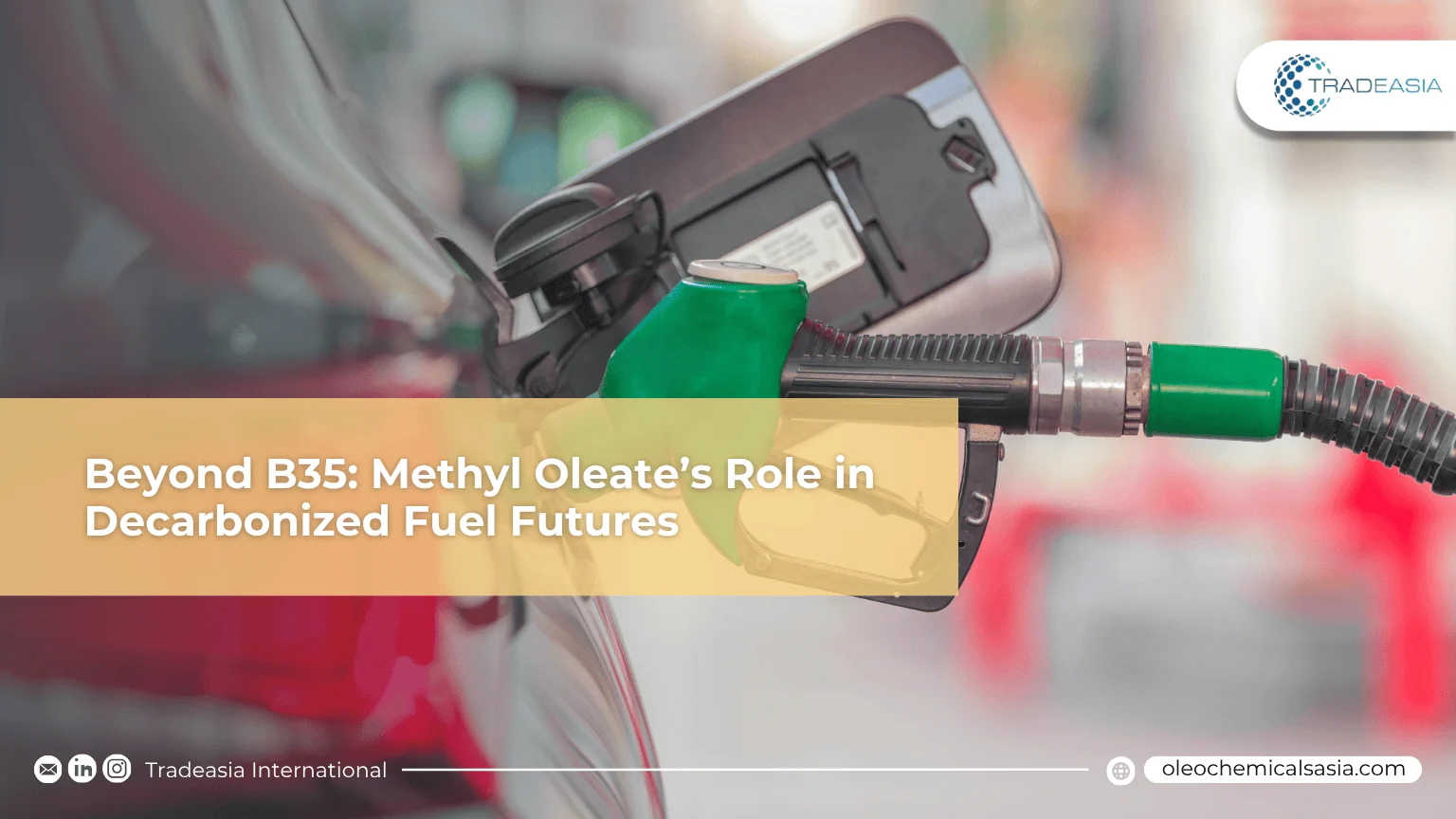The Future of Fuel and Functional Fluids: Methyl Oleate's Decarbonization Role Beyond B35/B50 Mandates

Table of Content
- The Technical Case for Carbon Reduction
- Stable Demand from Diversified Applications
The true strategic value of Methyl Oleate (MO) for the global energy and industrial sectors is its critical role in the decarbonization transition. As a key Fatty Acid Methyl Ester (FAME), MO is a high-performance, sustainable building block essential for two distinct high-volume markets: biofuels and bio-lubricants. This dual-market function positions it as a foundational chemical for the future.
The demand for MO is currently underpinned by powerful, top-down policy. News surrounding the expansion of mandates, such as Indonesia's proposed move towards a B50 blend, immediately impacts the market. This policy signal has kept the CPO benchmark futures strong, hitting 4,594 ringgit/metric ton in October 2025, which in turn solidifies the financial viability of MO production. This is reflected in the MO market's projected 5.3% CAGR through 2037.
For a procurement specialist like Tradeasia International, who operates at the crossroads of commodity trading and specialized chemical distribution, understanding this dual demand is key to future-proofing supply. Indeed, a core strength in the palm industry is the capability to optimize raw material flows to meet both commodity-scale and specialty-chemical needs.
The Technical Case for Carbon Reduction
Beyond the volume of biofuels, MO delivers immense value in the niche, high-margin functional fluids sector. As industries adopt MO-based bio-lubricants and metalworking fluids, they gain a powerful sustainability metric: an estimated 60-80% reduction in life-cycle Greenhouse Gas (GHG) emissions compared to traditional, fossil-derived products. This technical superiority is driving MO demand within the wider oleochemicals sector, contributing to the industry’s rising volume, which is expected to reach 18.50 million tons in 2025.
Stable Demand from Diversified Applications
Crucially, MO’s applications are diversified, protecting the market against volatility in any single sector. It serves as an effective, eco-friendly substitute for solvents like methylbenzene in the agricultural chemicals and pesticide industry. This breadth of use confirms MO's role not merely as a temporary alternative, but as a permanent, essential functional chemical in the sustainable economy. For industrial buyers, MO is a strategic investment in long-term operational resilience and environmental compliance.
Sources:
-
Research Nester: Methyl Oleate Market Analysis - Growth Outlook 2037
-
OleochemicalsAsia.com: The Role of Methyl Oleate (FAME) in Decarbonizing Asia’s Energy Sector
-
Towards Chemical and Materials: Oleochemicals Market Volume to Hit 18.50 Million Tons by 2034

Leave a Comment